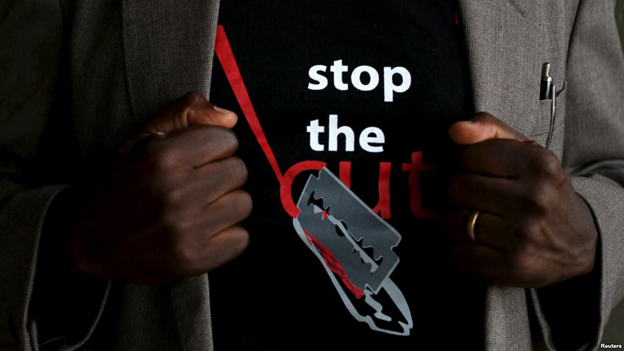FGM Day ~ A Day to Recognize the Harmful Practice

Just the other day, a doctor in Kenya went to the court of law to appeal that the ban of FGM, enacted in 2011, be lifted. She said that banning the medically unnecessary and painful procedure limits a woman’s right to decide what should happen to her life and her future. It also criminalizes a cultural expression, discriminates against boys and shows how the country is embracing the western culture by showing intolerance against those undergoing FGM.
A little recap, female genital mutilation (FGM), also known as female genital cutting and female circumcision, is the ritual cutting or removal of some or all of the external female genitalia. There are four types of operations involved in FGM; Circumcision, Excision, Infibulation, and Intermediate. Though all these are performed differently, they present severe consequences to the reproductive health offor girls and women.
One of the biggest myths associated with FGM is that its is prevalent in rural parts of Africa, Asia and the Middle East, which is far from reality. FGM is practiced globally including the major developed countries as well. The practice has reported cases of over 200 million girls and women affected by the practice in 29 countries with an estimation that in the next decade, 30 million girls are at the risk of being affected if the trends persist. There are significant differences in the age, regional and religion’s prevalence of the procedure.

With so many known ill effects, why are people still practicing FGM?
The ritual is performed for many reasons, some being, hygiene, social acceptance, improved marriage prospects, preserving virginity, religion and increasing sexual pleasure for women. However, what the “specialists” overlook are the health consequences and complications of FGM — hemorrhage, pain, pelvic infection, and painful intercourse and complications of childbirth such as obstructed labor due to scarring of tissues. The practice also predisposes girls to early pregnancies and risks of contracting STDs and HIV/AIDS from sharing of surgical equipment
“In societies where cutting is the norm, being cut gives women social status and more social support among women,” says Janet Howard, lead author of the article and anthropology professor at the University of Bristol. “They have more and better marriage opportunities” — “and thus a better chance of bearing children.”
Deep cultural and religious traditions where social norms, patriarchy and gender inequality are a constant challenge are major catalysts of this practice. Standing the pain proves toughness in a woman and that she can survive the harsh life out there. Girls are convinced that afterwards they will be respected in the society as women. To most it is a walk to adulthood. Resistance to the procedure brings discrimination amounting to persecution.
So what action needs to be taken?
Organizations like Asante Africa Foundation are in support of increasing girls’ and society members’ access to education, because educated women are less likely to allow their daughters to be subjected to FGM/C. Educating girls gives them access to information about their legal and social rights and freedom of choice — the ability to make decisions to improve their lives which has deep social implications. Men, senior family members, religious leaders and health professionals need to understand the potential harmful effects of FGM.
Community education communities (CEC) campaign to end female circumcision
As we mark the International Day of Zero Tolerance to Female Genital Mutilation, we come together to support village/community campaigns, which aim to change social norms at the community level instead of only individual attitudes, and empower women by undertaking global and joint advocacy efforts to highlight the issues around FGM/C and its implications for achieving the SDGs. Let us advocate for change with girls’ education, hoping the practice ends soon.
MaryBeth McKeever, Program Advisor from USAID Somalia’s office said, “One possible advocacy avenue is to work with the community education communities (CEC). These communities are composed of parents, students, teachers, school administrators, and traditional/religious leaders and each school has one. The CECs have been instrumental in increasing girls’ education and can help girls and women make informed choices on decisions that will impact their health, education, and lives.
- Written By — Mary Mwihaki
Take this quiz, and test your knowledge about this practice that is impacting the lives of millions of girls globally. To support our efforts click here
Resources
http://www.un.org/en/events/femalegenitalmutilationday/index.shtml
http://www.icj-kenya.org/news/latest-news/139-female-genital-mutilation-discrimination-or-not
